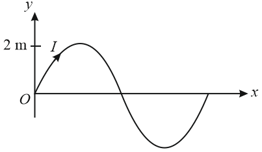DPP
B M Sharma Physics Solutions for Exercise - DPP
Simple step-by-step solutions to DPP questions of Magnetic Field and Magnetic Forces from Chapterwise/Topicwise Daily Practice Problems (DPP) Magnetism and Electromagnetic Induction JEE Main & Advanced. Also get 3D topic explainers, cheat sheets, and unlimited doubts solving on EMBIBE.
Questions from DPP with Hints & Solutions
A copper rod of mass rests on two horizontal rails distance apart and carries a current of from one rail to another. The coefficient of static friction between the rod and the rail is . What is the angle (relative to the vertical) of the smallest magnetic field that puts the rod on the verge of sliding?
A parabolic wire, as shown in the figure, is located in plane and carries a current . A uniform magnetic field of intensity, making an angle of with -axis exists throughout the plane. If the coordinates of the endpoint of wire are , then the total force acting on the wire is:
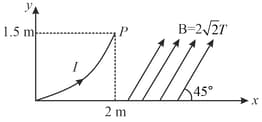
The figure shows an equilateral triangle of side carrying currents, placed in uniform magnetic field . The magnitude of magnetic force acting on the triangle is:
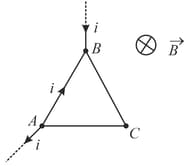
A horizontal metallic rod of a mass and length is supported by two identical vertical springs of spring constant each and natural length . A current is flowing in the rod in the direction shown. If the rod is in equilibrium, then the length of each spring in this state is given as:
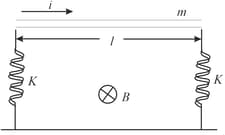
In the figure given, a current is established in the long straight wire . Another wire , carrying current is placed in the plane of the paper. The line joining the ends of the wire is perpendicular to the wire . The resultant force on the wire is:
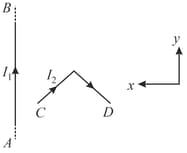
is a very long wire carrying current as shown. The portion is a semicircle with centre at . Another very long wire passes through point , perpendicular to the plane of and it carries current outside the plane of paper. The two wires,
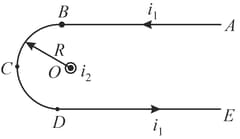
In the given figure, an infinitely long wire, at , is kept perpendicular to the paper, carrying current inwards. Which of the following statements is correct?

A current-carrying conductor is in the form of a sine curve as shown, which carries current . If the equation of this curve is and a uniform magnetic field exists in space, then,
